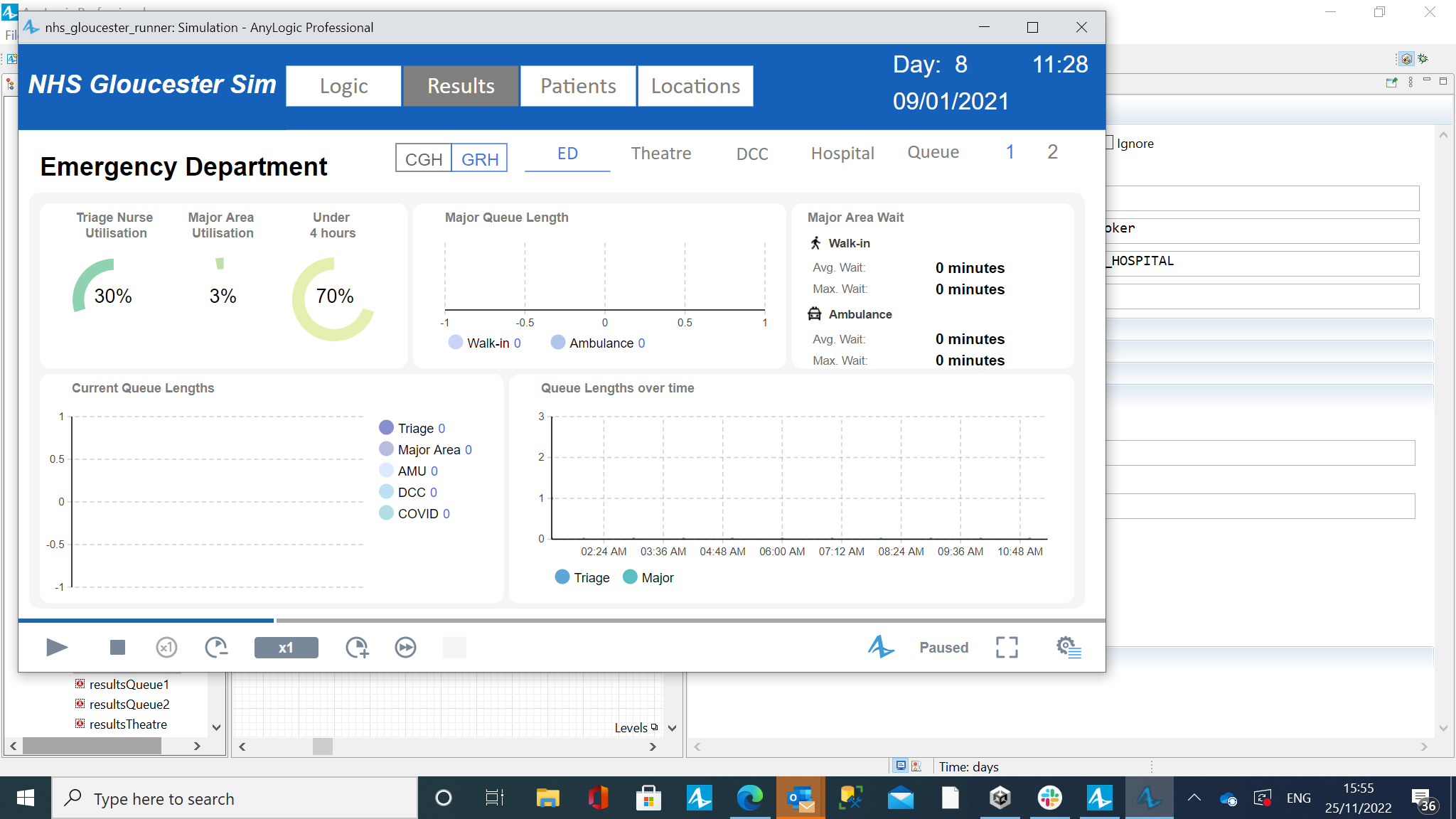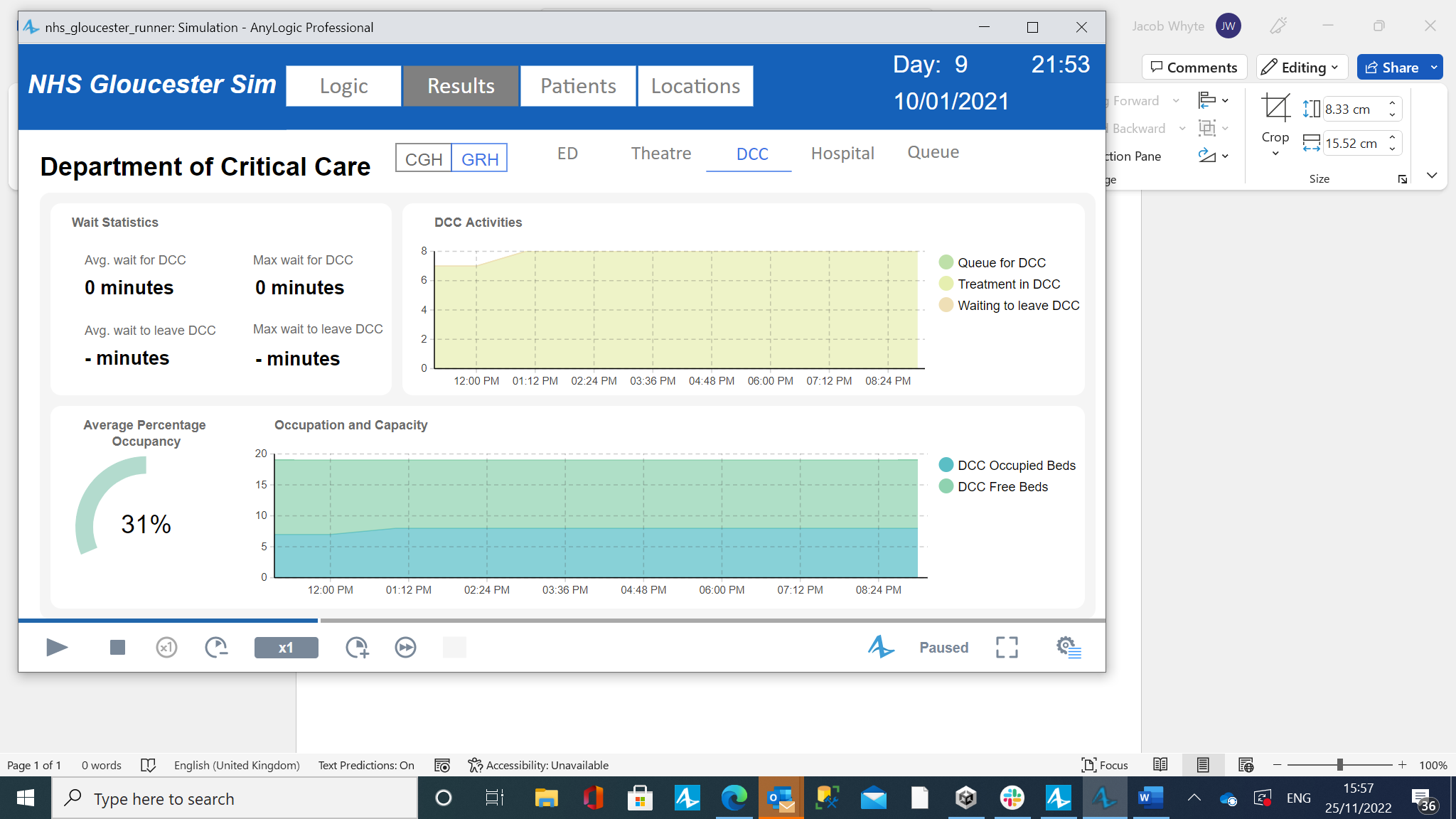NHS Gloucestershire
IMPROVING PATIENT CARE WITH A DIGITAL TWIN
CLIENT

Gloucestershire Hospitals NHS Foundation Trust manages three hospitals across Gloucestershire, employing around 8,000 people. Our project for the Trust was about building a digital twin simulation tool for two of their hospital sites: Cheltenham General Hospital and Gloucestershire Royal Hospital. NHS Gloucestershire data science team wanted to be able investigate what-if scenarios at a hospital level. Running these scenarios will support optimising hospital procedures and resources to offer the best care possible in dynamic situations.
This is a complex problem with potentially very large supply-demand deficits. Because of the long planning horizon, the uncertainties in climate, population and legislative drivers are significant. There is a need to optimise against this uncertain future to produce resilient plans. Previously, the main focus had been on identifying the least cost plan that met demand – a relatively straightforward optimisation problem. But being able to produce plans that are resilient and adaptable to uncertain events decades in the future and also incorporate other performance metrics (environmental benefit, customer preference and more) is a major technical challenge. How can we plan 75 years ahead for such a complex problem and with so many uncertainties?


Let’s collaborate
Send us an email, to discuss a new project.
We’re a team of innovators who are excited about unique ideas and help companies to create amazing solutions.

